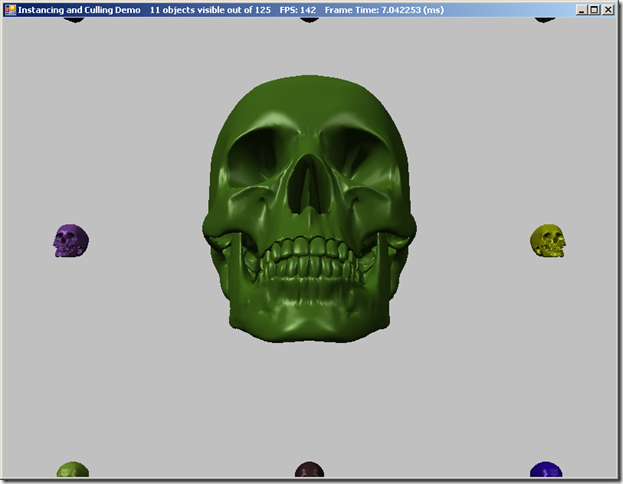One of the main bottlenecks to the speed of a Direct3D application is the number of Draw calls that are issued to the GPU, along with the overhead of switching shader constants for each object that is drawn. Today, we are going to look at two methods of optimizing our drawing code. Hardware instancing allows us to minimize the overhead of drawing identical geometry in our scene, by batching the draw calls for our objects and utilizing per-instance data to avoid the overhead in uploading our per-object world matrices. Frustum culling enables us to determine which objects will be seen by our camera, and to skip the Draw calls for objects that will be clipped by the GPU during projection. Together, the two techniques reap a significant increase in frame rate.
The source code for this example was adapted from the InstancingAndCulling demo from Chapter 15 of Frank Luna’s Introduction to 3D Game Programming with Direct3D 11.0 . Additionally, the frustum culling code for this example was adapted from Chapter 5 of Carl Granberg’s Programming an RTS Game with Direct3D (Luna’s implementation of frustum culling relied heavily on xnacollision.h, which isn’t really included in the base SlimDX). You can download the full source for this example from my GitHub repository at https://github.com/ericrrichards/dx11.git under the InstancingAndCulling project.

